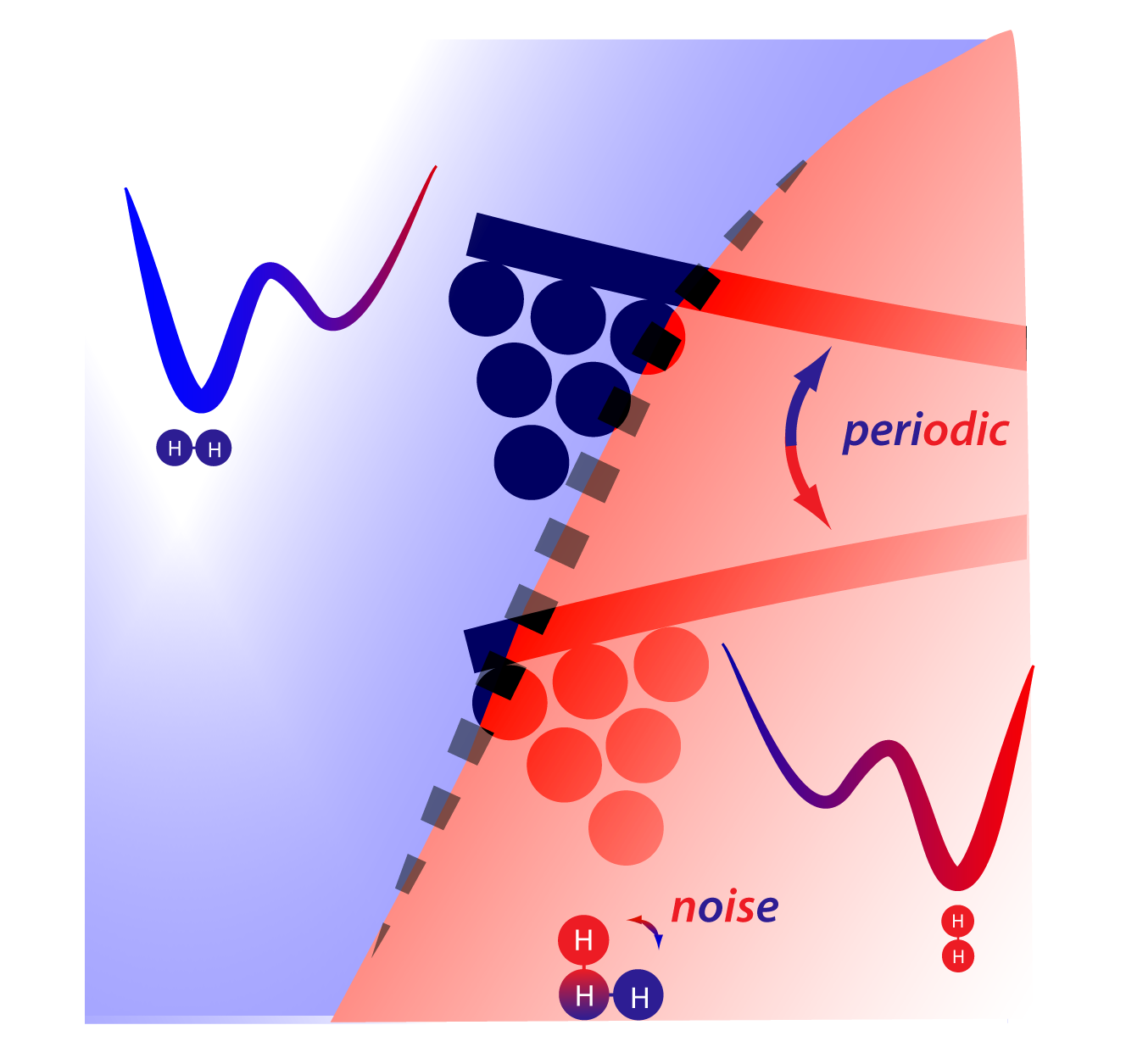Science: Converting 'noise' into mechanical energy on the nanoscale
Scientists of the Freie Universität Berlin demonstrate it is possible to use the energy of a moving hydrogen molecule to power up a “mechanical machine”. The work, led by Jose Ignacio Pascual (currently leader of the Nanoimaging Group at nanoGUNE), has been published in the prestigious journal Science (Science, DOI: 10.1126/science.1227621).
In nature, process like the motion of fluids, the intensity of electromagnetic signals, the chemical composition,.. are subject to random fluctuations that we normally call noise. Noise is an energy source driving many phenomena in continuous evolution like, for example, earth climate, or the evolution of biological systems. Harvesting energy from noise is a paradigm that nature has shown to be possible.
The research group focused their study on a hydrogen molecule (H2). In their experiment, they find that the random motion – the noise – of an individual hydrogen molecule can cause the periodic motion of a macroscopic mechanical oscillator. “This means that the smallest possible molecule, a hydrogen molecule, is ‘pushing’ an oscillator 1019 times more massive”, explains Nacho Pascual, one of the authors of the study.

Representation of the concerted motion of an oscillating tip (the periodically moving system) and a H-H molecule switching between two positions (the noisy fluctuations). When the tip approaches closer to the molecule (indicated as red in the scheme) the randomly moving molecule tends to spend more time in a configuration that pushes the tip upwards. For higher tip positions, the noisy molecule changes to a form (blue) with less effect on the tip. The periodically changing forces on the tip feed its motion. Representation of the concerted motion of an oscillating tip (the periodically moving system) and a H-H molecule switching between two positions (the noisy fluctuations). When the tip approaches closer to the molecule (indicated as red in the scheme) the randomly moving molecule tends to spend more time in a configuration that pushes the tip upwards. For higher tip positions, the noisy molecule changes to a form (blue) with less effect on the tip. The periodically changing forces on the tip feed its motion.
The underlying principle behind, known as Stochastic Resonance, uses the concerted motion of random hydrogen fluctuations and the periodic motion of a mechanical oscillator to amplify the energy transfer from molecule to oscillator. To couple their motion, the molecule was enclosed in the small gap between a flat surface and the sharp tip of an atomic force microscope. This microscope uses the periodic movement of a tip located at the end of a very sensitive mechanical oscillator to ‘sense’ forces existing at the nanoscale. The random motion of the molecule exerted forces against the tip, making it to oscillate. The oscillation of the tip, in turn, modulated the random motion of the hydrogen molecule and, hence, of the forces acting on itself. This resulted in a concerted “dance” of the tip with the noisy molecule. In this way, the tip oscillates distances larger than the size of the molecule using the energy extracted from the noise.
“In our experiment, the motion of the hydrogen molecule is induced by externally passing electrical currents through the molecule, not by temperature”, says Nacho Pascual, “and nothing speaks against this effect occurring for molecular fluctuations induced by other sources of energy like, for example, light”. The Stochastic Resonance mechanism has been proposed to be behind biomolecular engines powering up the cellular activity. “A promising aspect of our result is that it could be considered in the design of artificial molecular motors. In this way, energy from noisy environments could be extracted to drive the functional activity of a molecular motor like, for example ,its unidirectional rotation”, explains Felix von Oppen, whose theoretical modelling was crucial for the interpretation of the experimental results.
The experiments were realized using an ultra-sensitive atomic force microscope, constructed at the Physics Department of the Freie Universität Berlin to investigate molecular switches adsorbed on surfaces, the main focus of the collaborative research project SFB 658. “The detection of the movement of a molecule with the microscope is in fact not so difficult at the current level of development of this technique”, comment Christian Lotze and Martina Corso, who claim that “the main achievement is the identification and interpretation of the effect: that the molecule drives the motion of the oscillator”. In line with her co-authors, Katharina Franke assures that “now, our research focuses on the search for other sources of molecular noise, like electrical or magnetic fluctuations, which could lead to more efficient energy transfer to a mechanical oscillator.”
Original publication:
Driving a Macroscopic Oscillator with the Stochastic Motion of a Hydrogen Molecule
Christian Lotze, Martina Corso, Katharina J. Franke, Felix von Oppen, Jose Ignacio Pascual, Science vol. 338, no. 6108 pp. 779-782. DOI: 10.1126/science.1227621 (2012)
Jose Ignacio Pascual
Nanoimaging Group
CIC nanoGUNE Consolider
Tolosa Hiribidea 76 E-20018 Donostia – San Sebastian
ji.pascuald@nanogune.eu
